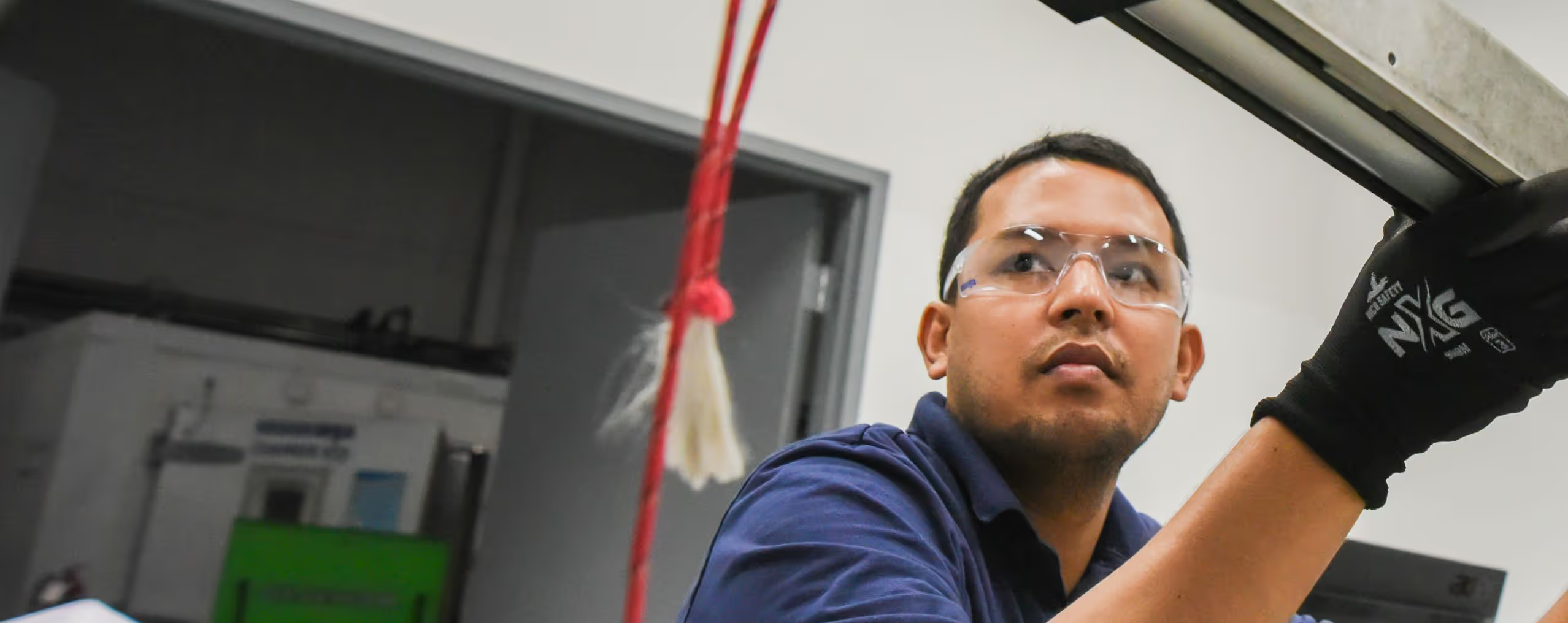NHTSA Publishes Final Rule for FMVSS 225, FMVSS 213 Child Restraint Systems
Apr 2, 2025
.jpg)
In a final rule published on January 7, 2025, the National Highway Traffic Safety Administration (NHTSA) will be introducing significant updates to Federal Motor Vehicle Safety Standard (FMVSS) No. 225, to improve the ease-of-use of child restraint anchorage systems by establishing new requirements for lower anchorages, tether anchors, and labeling. The change was originally proposed in 2015, introducing three new tools for determining lower anchorage depth, attachment force, and clearance angle. Effective on March 20, 2025, the final rule ultimately eliminates the attachment force requirement and updates the depth and clearance angle tools, as shown below. The implementation of these tools aim to reduce consumer mis-installations of child restraints.


The Clearance Angle Tool (CAT), as shown in Figure 1, is used to check for proper attachment of Child Restraint Anchorage Systems (CRAS). It consists of three main components, the lower anchorage attachment, weight block assembly, and an overhead track. The Lower Anchorage Attachment and Weight Block Assembly are connected to each other with an S-Type load cell in line to ensure a proper vertical force is being applied to the lower anchorage (67 N). An inclinometer is then placed on the anchorage attachment to measure the clearance angle, which must be at least 54°, as per the final rule.
The Anchorage Depth Tool (ADT) shown in Figure 2 will also be used to check for proper CRAS attachment. It consists of a lower anchorage hook and view bar. On the view bar, a zeroing strip is present and is aligned to the zero scribe line (end of the lower anchorage hook). Once zeroed, the view bar is then moved forward with the use of a slider out of the way to allow for lower anchorage attachment. Once attached, the view bar can now be slid rearwards until the zeroing strip makes contact with the seat and the anchorage depth is now shown on the tool. New anchorage depth, as per the final rule, must be less than 20 mm.
Other changes in the Final Rule include: Updating the zone in which a tether anchor may be placed, updates for the lower anchor and tether location markings, and changes to the configuration requirements for tether anchors.


Notes:
- Dimensions in mm, except where otherwise indicated
- Portion of user-ready tether anchorage that is designed to bind with the tether strap hook to be located within shaded zone
- Drawing not to scale
- “R” Point: Shoulder reference point
- “M” Point: M-reference plane, 1,000 mm horizontally back from “R” Point

Notes:
- Dimensions in mm, except where otherwise indicated
- Portion of user-ready tether anchorage that is designed to bind with the tether strap hook to be located within shaded zone
- Drawing not to scale
- “R” Point: Shoulder reference point
- “V” Point: V-reference point, 350 mm vertically above and 175 mm horizontally back from H-point
- “W” Point: W-reference point, 50 mm vertically below and 50 mm horizontally back from “R” Point
- “M” Plane: M-reference plane, 1000 mm horizontally back from “R” Point



Since MGA’s founding in 1977, our team has been committed to providing thorough testing services to support safety and innovation. With nine locations worldwide, we have had the opportunity to work with a wide range of customers, including performing FMVSS compliance testing for NHTSA for the past 40 years. We continuously adapt to industry trends and customer needs, aiming to provide reliable and thoughtful service to help our customers achieve their goals.
NHTSA is giving vehicle manufacturers a 3-year phase-in period, by requiring at least 20% of vehicles to comply by September 1, 2028, 50% by 2029, and to be fully compliant by 2030.
The new tools are being built by MGA’s fabrication team , and will soon be available for purchase. Once MGA has the first set of tools completed, we will provide additional information to follow up this article with.
For additional information on Child Restraint Anchorage Systems (CRAS), please fill out our contact form above. We look forward to working towards a safer automotive future with you.
More information on the Final Rule can be found here: Federal Register : Federal Register :: Federal Motor Vehicle Safety Standards; Child Restraint Systems, Child Restraint Anchorage Systems, Incorporation by Reference

Ready to Get Started?
Let's discuss your testing needs and how MGA can help. Our team is ready to provide the expertise and solutions you're looking for.
